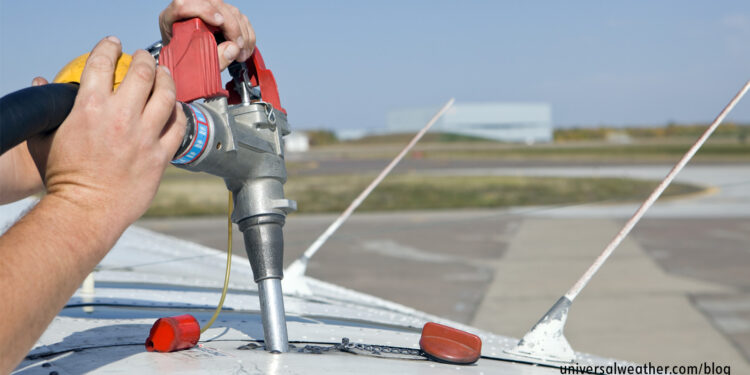Business Aviation Trip Planning Tips: Operating to Japan – Fuel, Security, and Additional Services

This is a post by author Hiroshi Higashiyama. Hiroshi is representative director for Universal Aviation Japan, which has aircraft ground handling facilities in Haneda, Narita, Sapporo, and Osaka. Hiroshi is an expert on business aircraft operations in Japan and can be contacted at hiroshihigashiyama@universalaviation.aero.
This aviation blog post is part of a series on operating to Japan and continues from our last article entitled “Business Aviation Trip Planning Tips: Operating to Japan – Customs, Immigration, and Quarantine.”
For business aircraft operators traveling to Japan, fuel services and arrangements are very reliable and straightforward. To ensure a seamless process, coordinate all fuel uplifts with your 3rd-party provider or handler in advance to ensure on-time services.
The following is an overview of what you need to know:
1. Make prior arrangement for fuel uplifts in Japan
It’s best to advise your ground handler of fuel requirements prior to arrival in order to have a fuel truck on standby. Your handler can also assist in arrangements to have fuel taxes removed, when applicable, for international and, in some cases, domestic legs.
2. No particular fuel documentation is necessary
Fuelers in Japan seldom require any specific documentation. Your ground handler will coordinate the fuel process and supply the fueler with any information he or she requires. Even in the case of charter operations, an air operator certificate does not need to be presented to the fueler.
3. Know fuel payment options
Most fuel companies in Japan accept major oil company and aviation fuel cards; however, some locations require a fuel release. Your ground handler, with advance notice, can also arrange credit for fuel. Cash is not accepted for fuel uplifts in Japan and, in most cases, credit cards will not be accepted. Posted fuel prices typically change monthly. Various taxes and fees – such as airport and facility charges – will be included in your fuel cost. However, tax is not applicable on international legs.
4. Fuel testing prior to delivery is routine
Fuel quality is tested, by fuel truck crew, prior to every into-plane delivery. With advance notice, crews can request additional fuel quality tests.
5. Fuel trucks are usually on time in Japan
Fuel trucks are generally on time, or waiting for aircraft arrival, so long as fuel uplift has been scheduled with adequate advance notice. A fuel request made last-minute may cause delays. Hydrant fuel is available at some airports – including Narita (RJAA), Nagoya (RJGG), and Haneda (RJTT). However, hydrant fuel at RJTT is restricted to commercial operators.
6. Airports in Japan are secure
Security is tight in Japan. Airports have tall perimeter fencing, video surveillance, and routine patrols by armed airport police. Private security can be arranged for aircraft but is usually not necessary. Security screening procedures are in place for both crew and passengers on day of departure. Off-airport security is also very good in Japan, and there’s seldom a requirement to arrange secure transport or to take special security measures – other than common-sense security considerations – when in town.
7. Airport passes are required for ramp access
Your ground handler can arrange airport passes and access for mechanics and other necessary 4th-party personnel; however, this is on the condition that such employees will be under escort at all times. In-flight caterers have airport authority to access the ramp.
8. Caterers are available at many, but not all, airports in Japan
In-flight caterers are available at certain larger airports in Japan; however, delivery charges can be very high. If an in-flight caterer is not available, your ground handler can assist in sourcing catering from local restaurants and walking it through security. Be aware that many hotels and hotel chains in Japan will not provide food/meals to go, due to concerns over sanitary issues and liability.
9. Planeside pickup is only possible at Kobe
Kobe (RJBE) has a General Aviation (GA) terminal with ability to clear crew and passengers either onboard or within the GA facility. At this location – and this location only – it’s possible to arrange vehicle plane-side pick-up and drop-off for arriving and departing passengers.
Conclusion
Airports in Japan are very secure, and off-airport security issues are extremely rare. Work with your ground handler to coordinate all 4th-party services – particularly when planning to order catering from any source other than a designated in-flight caterer.
Questions?
If you have any questions about this article or operating to Japan, contact me at hiroshihigashiyama@universalaviation.aero.
Later we will discuss airport slots for your trip to Japan.




